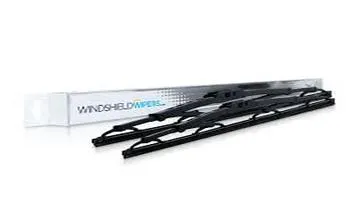Snow Shovel A Winter Essential
A snow shovel is a specialized tool designed for the removal of snow from surfaces such as driveways, sidewalks, and pathways. Typically featuring a broad, flat blade attached to a long handle, snow shovels are constructed from durable materials like plastic, aluminum, or steel to withstand harsh winter conditions. The blade's slightly curved design helps scoop and lift snow efficiently, while ergonomic handles reduce strain on the user's back and arms during prolonged use. Some models include features like non-slip grips or additional handles for improved leverage. Snow shovels are essential for maintaining safe and accessible outdoor spaces during winter, providing an effective solution for managing snow accumulation in residential and commercial areas.

Winter can be a beautiful season, with its snow-covered landscapes and serene atmosphere. However, with this beauty comes the inevitable task of snow removal, which can be both physically demanding and time-consuming. Enter the snow shovel – an indispensable tool for anyone living in regions that experience heavy snowfall. In this review, I'll delve into the features, benefits, and drawbacks of a typical snow shovel, and provide some tips on what to look for when purchasing one.
Features of a Snow Shovel
At first glance, a snow shovel might seem like a simple tool, but a closer inspection reveals a range of features that can significantly impact its performance and ease of use. Here are some key attributes to consider:
1. Blade Material and Design:
- Plastic Blades: Lightweight and durable, plastic blades are less likely to damage delicate surfaces like wooden decks. They often have a non-stick coating that prevents snow from clinging to the blade.
- Metal Blades: These are typically made of aluminum or steel. They are more durable than plastic blades and can handle heavier, compacted snow. However, they are heavier and can scratch surfaces.
- Blade Shape: A curved blade helps in pushing snow, while a flat blade is better for lifting and throwing.
2. Handle Material and Length:
- Wood Handles: Traditional and sturdy, wood handles provide a good grip but can be heavy and susceptible to splintering.
- Metal Handles: Lightweight and durable, these are often made of aluminum. They can feel cold to the touch in frigid weather.
- Plastic or Fiberglass Handles: These are lightweight and often ergonomically designed to reduce strain. They are also resistant to cold temperatures.
- Adjustable Length: Some snow shovels come with telescoping handles that allow users to adjust the length for better leverage and comfort.
3. Ergonomic Design:
- D-Grip Handles: These provide a comfortable grip and better control.
- Bent or Dual Handles: Designed to reduce back strain by allowing the user to stand more upright while shoveling.
Benefits of a Snow Shovel
1. Efficiency: A well-designed snow shovel can significantly reduce the time and effort required to clear snow from driveways, sidewalks, and other areas. The right shovel can make the difference between a quick task and a back-breaking chore.
2. Versatility: Snow shovels are not just for snow. They can also be used to clear ice, sand, and other debris, making them a useful tool year-round.
3. Cost-Effective: Compared to snow blowers or other mechanical snow removal tools, snow shovels are relatively inexpensive. They require no fuel or electricity, making them an eco-friendly option.
4. Exercise: Shoveling snow can be a great workout. It engages various muscle groups, including the core, arms, and legs, providing a good cardiovascular exercise.
Drawbacks of a Snow Shovel
1. Physical Strain: Despite the potential for exercise, shoveling snow can be physically demanding, particularly for those with health issues or limited mobility. Improper shoveling techniques can lead to back injuries, muscle strains, and even heart attacks.
2. Time-Consuming: For large areas or heavy snowfalls, shoveling can be time-consuming and labor-intensive. In such cases, a snow blower might be a more efficient option.
3. Weather Conditions: In extremely cold or windy conditions, shoveling snow can be uncomfortable and even hazardous. Frostbite and hypothermia are risks to consider when spending extended periods outside in winter weather.
Tips for Choosing the Right Snow Shovel
1. Assess Your Needs: Consider the size of the area you need to clear and the typical snowfall in your region. For large driveways or heavy snowfalls, a larger, more durable shovel might be necessary.
2. Check the Weight: Choose a shovel that is lightweight enough for you to handle comfortably but sturdy enough to deal with heavy snow.
3. Look for Ergonomic Features: Ergonomic handles and grips can make a significant difference in reducing strain and improving comfort during use.
4. Consider Blade Material: If you have delicate surfaces to clear, opt for a plastic blade. For heavy-duty use, a metal blade might be more appropriate.
5. Read Reviews: Before purchasing, read reviews and ratings from other users to get an idea of the shovel's performance and durability.
Conclusion
In conclusion, a snow shovel is an essential tool for anyone living in snowy climates. While it may seem simple, the right shovel can make a significant difference in the ease and efficiency of snow removal. By considering factors such as blade material, handle design, and ergonomic features, you can find a snow shovel that meets your needs and makes winter maintenance a more manageable task. Despite its drawbacks, the benefits of a good snow shovel far outweigh the challenges, making it a worthwhile investment for the winter months.






